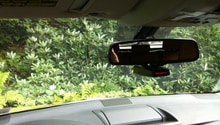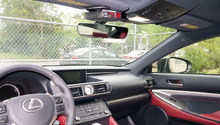Lexus IS: How to Install Radar Detector
Hard wiring a radar detector to your Lexus is a simple, do-it-yourself project that will (hopefully) save you some speeding tickets.
This article applies to the Lexus IS 250, IS 350 (2005-2014).
Radar use in cars is pretty commonplace, even though the average commuter isn't tracking enemies or fighting a war. Instead, most people buy radar detectors to know when they're in the vicinity of undercover police or a speed trap. The radar detector will tell you immediately if a policeman is gauging your speed with a speed gun, therefore giving you the opportunity to reduce your speed and keep everyone safe around you. It may save you from getting a speeding ticket, too. The best part is that radar detectors are legal in almost all states. Residents of Virginia and Washington, DC will have to live without them. Radar jammers, on the other hand, are illegal on a federal level.
The radar detector used in this article is a Valentine V1 laser and radar detector. Installation of other detectors or similar accessories will follow the same steps.

Materials Needed
- Needle nose pliers
- Flathead screwdriver
- Phillips screwdriver
- Wire stripper
- Hard wire kit from Valentine
Step 1 - Mount the radar detector to the top of the windshield
The Valentine Radar Detector will stay in position indefinitely using its suction cups. Lightly moisten the inside of the cups and push the detector with its cups into the chosen position on your windshield.

Step 2 - Wire fuse box to detector
The fuse box is located on the driver's side, under the dashboard (figure 2). Your owner's manual will pinpoint the exact location if you can't find it. Run your 16 AWG wire up through the front/side panel, which comes off easily (figure 3.) Once you reach the headliner, pull the wire until you have more than enough length to connect it comfortably to the Valentine Radar Detector. Then you can begin stuffing the wire into the space between the headliner and the windshield (figure 4.) Once the wire is hidden under the headliner, re-install the driver's side front/side panel.
Plug the proper end into the back of the detector and splice the end onto the wire you just ran from the fuse box. Route the wiring from your radar detector along the driver's side A-pillar. When you get to the bottom of the windshield, tuck the cabling under the plastic trim as cleanly as possible. You can route the cable the rest of the way by popping off the side panel cover. Use a flat-head screwdriver to carefully pry this panel off.
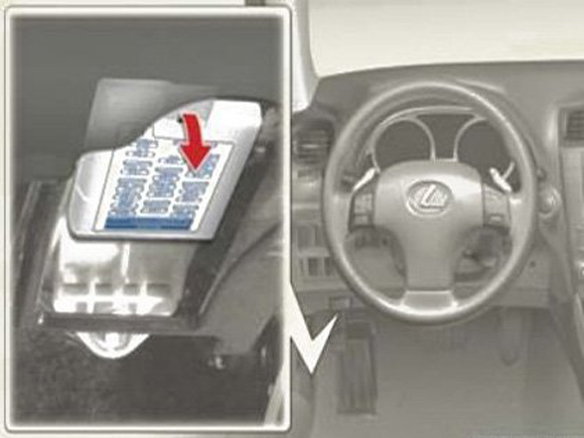
Figure 2. Driver's side fuse box location. 
Figure 3. Remove this panel and route wiring through it. 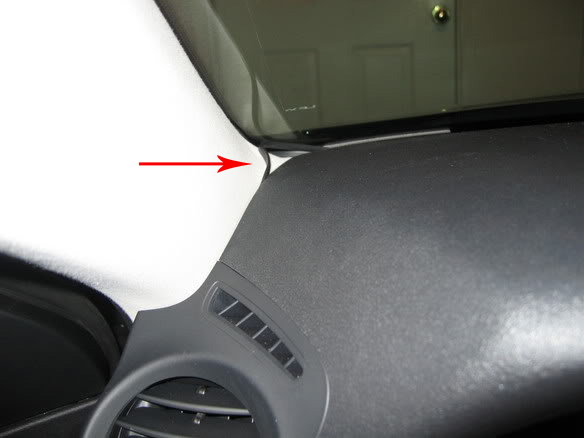
Figure 4. Radar detector wire tucked into interior trim.
Step 3 - Connect wire to fuse
Since you only want the detector to be "on" when the ignition is in the accessories or the "on" position, choose a fuse that will enable this. The 15-amp fuse for seat heating is a good one (figure 5.) The 15-amps will supply plenty of juice for the detector and the seats at the same time. This particular fuse is useful because it's on a switch, so it only gets electricity when the ignition is on.
Take the fuse out of the box using the needle nose pliers and insert the bare end of the wire into the fuse. Re-install the fuse and turn on the ignition. Your Valentine detector should be working beautifully. Close the fuse box, and you're ready to drive.
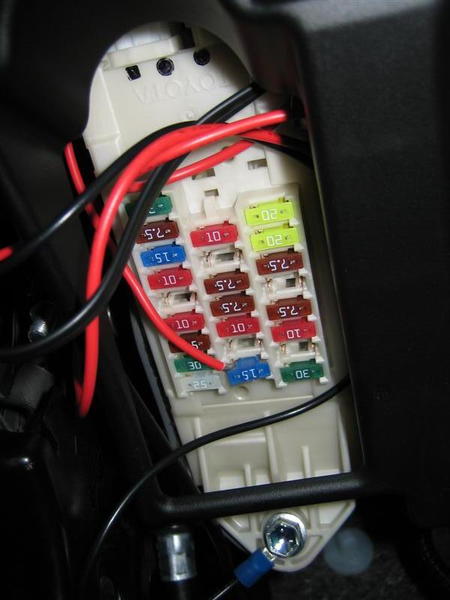
Featured Video: How to Install Radar Detector in Lexus IS
Related Discussion
- How to Hardwire Your Valentine V1 Into a Lexus IS 250/IS 350 - ClubLexus.com

